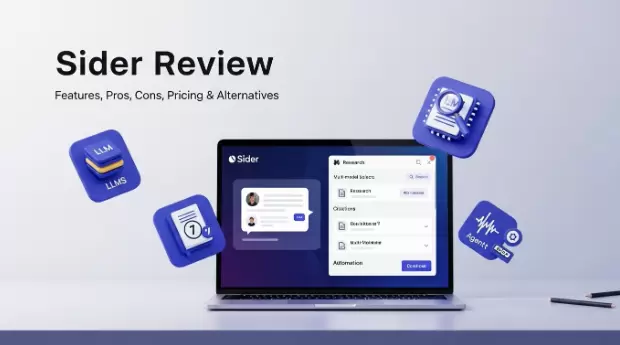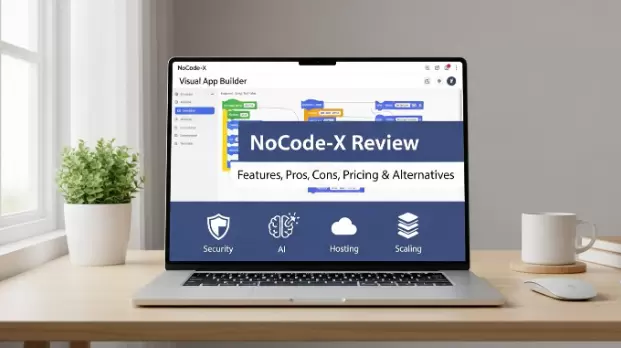Many startup founders struggle to achieve the right balance between growth and profitability, but it can be even more difficult in Software as a Service (SaaS), such as accounting software, HOA management software, and customer relationship management.
Because of this, the Rule of 40, a metric that evaluates the health of SaaS companies, has become a common benchmark. This suggests that a company’s combined revenue growth rate and profit margin should be 40% or higher to indicate financial health and potential.
If you follow the Rule of 40, you can make sure you’re not sacrificing long-term financial health and stability in exchange for rapid short-term expansion. Here’s everything you need to know about the Rule of 40 to balance your profitability and growth in SaaS.
Understanding the Rule of 40
The Rule of 40 emerged as an industry benchmark in the SaaS space to offer a simple, straightforward metric to evaluate company health. It began in venture capital and financial analysis to provide a balanced metric that considers the whole picture. The Rule of 40 is particularly helpful for SaaS companies, given the differences in the business model compared to traditional businesses.
For example, SaaS companies often prioritize rapid growth, but it can come at the cost of profitability. The Rule of 40 weighs the tradeoff and provides a single metric with nuance.
The Rule of 40 formula is: Growth rate + profit margin = 40% or more. So, if an SaaS company is growing at 50% annually but with a -10% profit margin, it meets the Rule of 40. Similarly, a company that has 20% growth and 20% profit margin also falls within the Rule of 40.
The Rule of 40 is a widely accepted metric, but keep in mind that it may not be appropriate for all SaaS business goals. If your startup is in the early stages, you may need to prioritize growth to gain future profits.
Rule of 40 in Current Context
SaaS startups are launching all the time, so investors and business owners need a metric to evaluate whether these companies are scaling sustainably or setting up to crash and burn. If a company meets or exceeds the 40% threshold, it indicates that it has a viable business model.
On the operational end, the Rule of 40 can guide your business decisions. You know where your company stands and whether you should allocate your resources toward growth, customer acquisition, or profits.
Strategies to Support the Rule of 40 and Sustainable Growth
Optimize Customer Acquisition Cost (CAC) and Lifetime Value (LTV)
Ideally, your new customers should have a high LTV to CAC ratio. A good benchmark is 3:1, which means that every dollar allocated to customer acquisition offers a value of three dollars. For example, if an average customer LTV is $3,000 with a CAC of $1,000, it’s a good ratio. Conversely, spending $1,000 on acquisition to gain LTV of $1,000 means that there isn’t a profit.
Another way to boost LTV without raising CAC is with organic growth strategies. Word-of-mouth referrals and formal referral programs can build loyal brand advocates and generate growth and retention without a lot of paid marketing efforts.
Improve Customer Retention and Reduce Customer Churn
Early adoption is an important factor in minimizing churn and keeping a steady flow of cash in SaaS companies. How you present your company to a customer and the experience you give them, starting at onboarding, shapes the rest of their experience and influences their loyalty.
Make sure you’re taking care of your customer every step of the way with proactive engagement and customer support. Check in regularly and offer valuable or educational content that shows customers how to get the most out of your products or services.
Embrace Scalable Pricing Models
Tiered pricing is a common pricing model in SaaS for several reasons. It allows smaller customers to gain functionality without paying for bells and whistles they don’t need. Then, when it’s time for an upgrade, they can step up to the next tier to get broader functionality and features.
Another popular option is usage-based pricing, which increases revenue scalability. This is also known as consumption-based pricing or pay-as-you-go pricing, which helps the customer by only charging for what they use and your company by ensuring your revenue scales in proportion to growth.
Maintain Strong Unit Economics
Unit economics offer insights into the profitability of a business model based on each unit, which may be a customer, product, or service. This shows you whether you’re making money on each transaction — or where you may be losing money.
Keep an eye on your unit economics to ensure you’re profitable. Adjusting your pricing strategies as needed keeps your business competitive in the market while maximizing your revenue potential.
Track Metrics and KPIs
Financial visibility and data analysis are essential to planning sustainable growth and profitability. Keep up with your key performance indicators (KPIs) to evaluate all aspects of your company health.
Some of the important KPIs to track include:
- Monthly recurring revenue (MRR) and annual recurring revenue (ARR): Indicators of steady income growth and stability.
- Customer acquisition cost (CAC): Total cost to acquire a new customer, including sales and marketing campaigns.
- Customer lifetime value (LTV): The projected revenue a customer will generate over their relationship with the company.
- Churn rate: The percentage of customers who leave in a certain timeframe. Lower churn means strong customer retention, while higher churn indicates a problem in some part of the customer journey or experience.
- Gross and net revenue retention: Measure of how much revenue is retained from existing customer base while accounting for contractions, expansions, and churn.
- Conversion rate: The rate that measures efficacy of marketing and sales efforts for turning prospects into paying customers.
Focus on Sustainable Growth
Striking a balance between rapid growth and long-term profitability can be a challenge with the unique business model of an SaaS company. The Rule of 40 offers a clear benchmark to understand your company’s health and sustainable growth, along with strategies to optimize and track customer acquisition, customer retention, pricing effectiveness, and operational efficiency.


 Table of Content
Table of Content










